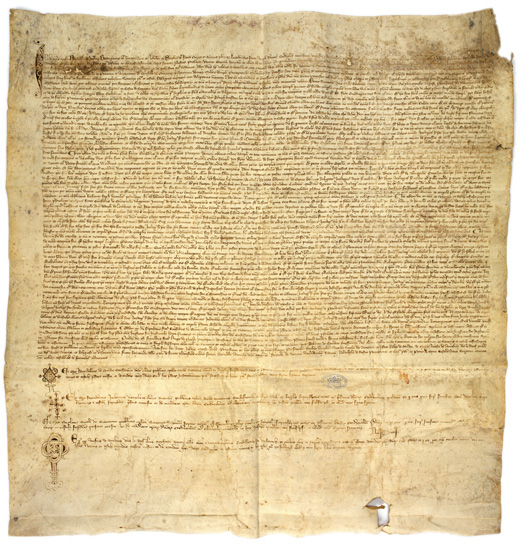Thus finishes the history of the Knights of the Temple after two centuries. The Templars would have been in possession of the most hidden secrets of alchemy. They were first to use the IPERICO on burns and hurts from cut, like antiseptic, astringent, healing, and in order to improve humor of the soldiers that remained immobilized in bed for months.
The Templars created a mixture with pulp of Aloe, pulp of Hemp and wine of Palm called “ELISIR of GERUSALEM", with therapeutic and nourishing properties, they used the Arborescens ALOE for its antiseptic, bactericidal and fungicide actions and for its capacity to penetration in the deeper layers of the skin. Robert Anton Wilson, in his book on the Templars, asserts that they used the hashish and practiced a shape of Arabic Tantrism; the doctrine of enlightenment as the realization of oneness of one's self and the visible world, combining elements of hinduism and paganism, including magical and mystical elements.
The authors of Holy Blood and Holy Grail, Baigent, Leigh and Lincoln, comment that the Templars need to treat wounds and illness, made them experts in the use of drugs and the Order in advance of their time regarded epilepsy not as demonic possession but as a controllable disease. Interestingly, cannabis is the safest natural or synthetic medication proven successful in the treatment of forms of epilepsy.
The esoteric inheritance and the alchemical-spagyrics acquaintances were handed from the Templars to the Crocifers. From these Orders, that one of Saint Giacomo or Jacobite managed many Hospitals during the XV century. To the Jacobite monks , in quality of experts in the cure of the diseases of the skin, the task was entrusted to cure the wounded soldiers during the Crusades, in the Hospitals of Malta and Cyprus.
To them, in fact, was attributed the capability to create miraculous ointments. In such historical context it must estimate the work of the Templars concluding with recognizing that they, anticipating the times, had a modern vision of the Medicine and, although were considered heretics and consigned to the fire, recently a document has been recovered in Archives Vaticans from the studious Barbara Frale that demonstrates as Pope Clemente V secretly pardoned Templars in 1314, acquitting their Great Master from the heresy accusation.

Absolution's parchment for Templar Leaders including Jaques de Molay by the Apostolic Commission "ad inquirendum" of the 3 papal legates Bérenger Frédol, Etienne de Suisy and Landolfo Branacci
Chinon, Tours diocese, 1308 august 17-20. Archivum Secretum Apostolicum Vaticanum, Archivum Arcis, Armarium D 218.
Bibliography:
1)“The trial of the Templars in the Papal State and the Abruzzi” (Città del Vaticano, Biblioteca Apostolica Vaticana, 1992) 2)Aries, P. 1985. Aries, P. 1985. Images of Man and Death. Harvard University Press, 271p. 3)Chronicon Monasterii S. Salvatoris Venetiarum Francisci de Gratia (1141-1380), ed. A. M. Duse, Venezia 1766, pp. 69-70. 4)L. Green Chronicle into History. An Essay on the Interpretation of History in Florentine Fourteenth-Century Chronicles Cambridge 1972. 5)A. Coville Documents su les Flagellants «Histoire littéraire de la Françe» 37 (1937),pp 390-411 6)Tononi AG. La Peste Dell’ Anno 1348. Giornale Linguistico de Archeologia, Storia e Letteratura 1884;11:139–52. 7)Horrox R, editor. The Black Death. Manchester: Manchester University Press; 1994. p. 14–26. 8)Hecker JFC. The epidemics of the Middle Ages. London: Sydenham Society; 1844. 9)R. Guarnieri, Prefazione storica, in M. Porete, Lo specchio delle anime semplici , traduzione di Giovanna Fozzer, prefazione storica di Romana Guarnieri, commento di Marco Vannini, Edizioni San Paolo 1994, p. 39. 10)Alfred D. Berger, “Marijuana,” Medical World News, July 16, 1971, pp. 37-43; reprinted in Marijuana Medical Papers. 11)B. Guenée Storia e cultura storica nell’occidente medievale. Bologna 1991, pp. 255-61. 12)V. Rutenburg Popolo e movimenti popolari nell’Italia del ’300 e ’400, introd. di R. Manselli, Bologna 1974, p. 109. 13)N. Biraben Les hommes et la peste en France et dans les pays européens et méditerranéens, voll. 2, Paris - La Haye 1975-76 (Civilisations et Sociétés 35-36), 2, p. 69. 14)Umberto da Romans, De eruditione praedicatorum, II, XCII, in Malato, medico e medicina nel Medioevo di J.Agrimi-C.Crisciani, Torino 1980.
15th Congress of the European Academy of Dermatology and Venereology, Rhodes-Greece
Prof. Camillo O. Di Cicco, M.D.
(Abstract)





Comments